Welcome to the creative BERNINA Blog Advent Calendar 2022, which this year has the theme “Colorful Christmas Season”! You can look forward to a total of 24 inspiring and colorful creative ideas! The BERNINA Blog Team wishes you lots of fun and a relaxed sewing Advent!
I am particularly pleased that I am able to open up our Advent calendar this year as well. And of course I am going to feature something really colorful too! In the last two years, I have provided two instructions for small felt animals: the elephant and the squirrel. Since these were highly appreciated, I would like to continue this tradition. That’s why I have created this little embroidered donkey for you. Whether as a gift or Christmas tree decoration, as a pincushion for your sewing room, filled with a small rattle ball for a baby, or as a decorative object… The little lucky donkey is simply magical!
My version was first embroidered with the embroidery machine and then sewn together as I relaxed on the sofa with my family on a quiet evening. In the following, there is also a corresponding version for all those who do not have an embroidery machine.
Material requirements for a lucky donkey
- Wool felt gray remnant approx. 1.2 mm thick | 15 x 20 cm
- Universal sewing thread, e.g. Seralon from Mettler
- Thicker, firm thread, e. g. Extra Strong from Mettler for the mane and tail
- Fiberfill as required
- Leftover pipe cleaners
The version including machine embroidery also requires
- Machine embroidery thread, e. g. Polysheen from Mettler
- Embroidery bobbin thread, e. g. Bobbinette from Mettler
- Tear-away stabilizer
The version without an embroidery machine also requires
- Hand embroidery thread/Embroidery Twist
The lucky donkey consists of the following parts:
- Body 2x mirror image
- Belly 2x mirror image
- Ears 4x mirror image
- 1 head piece
- 4 foot soles
Version without machine embroidery – the pattern
You can download the pattern for the donkey (without an embroidery machine) as a PDF here for free:
Sewing pattern for donkey (PDF)
The seam allowances are all included. Nothing needs to be added! Please cut the pieces in the quantity described and shown above.
The embroidery file
I designed this embroidery machine version with my BERNINA Embroidery Software 9.
The embroidery file is available for download here:
Embroidery file for donkey (ZIP)
All common BERNINA models should be able to process the embroidery file contained in the ZIP folder. If you have an embroidery machine from another manufacturer, you can convert the file format in the free BERNINA Embroidery Software ArtLink 8. Please note that this is intended for personal use and is not permitted for commercial use.
Preparation for version with machine embroidery
First, stretch a piece of tear-away stabilizer into the oval hoop. Then place a sufficiently large piece of wool felt (approx. 15 x 20 cm) into the hoop and attach it with the basting function of your BERNINA. I used my BERNINA 700 in this case.
Now embroider the first sequence. Use these to cut out the individual pieces by hand later on. I use Bobinette bobbin thread from Mettler for these steps, as this thin thread is particularly easy to remove again.
Now embroider the individual details.
Take the embroidery out of the hoop and remove as much stabilizer as possible. Cut out the pieces precisely along the marked seam. This then “falls” out of the felt almost by itself or can be easily removed.
Exception: the ears without embroidery could be cut out with minimal allowance and sewn together later with the machine. Details for this are provided below in this guide.
Body
The pieces are all sewn together with small loop stitches by hand or with Seralon Universal thread.
First sew the long, straight edge of the belly together.
Then place the first part of the body exactly over it and close the leg seams and the seam on the belly. Do not close the lower opening yet.
Do the same with the other body piece.
Now insert a correspondingly long, curved piece of pipe cleaner into the front or back legs. I folded over the ends a little again so that they would not be able to poke through the seam later.
Then all four soles are inserted with small loop stitches.
Now sew the head piece in place. The squarer part points forward. You can also find precise markings in the worksheet above for the version without an embroidery machine.
Now close the body pieces from the front, starting with small loop stitches.
Do the same on the opposite side.
Now stuff the head into shape with fiberfill.
For the tail, I added a knot at the end of nine sufficiently long EXTRA STRONG threads. These are braided and knotted again at the other end. The tail is approximately 3-4 cm long when finished. I sew this in the appropriate place or sew it into the seam. The back remains open for the stuffing.
Before the back is closed, stuff the donkey well with fiberfill. You can use a chopstick to successfully stuff the corners. Then close the body completely.
Mane
Now the mane is made as follows: I put two sufficiently long EXTRA STRONG threads in a thread loop. I pull these through the head. In order to make the mane nice and straight, a marking can be made with a self-erasing (Trick) marker.
Then remove the support thread and pull the end of the EXTRA STRONG thread through the loop. Tighten.
In the manner described, place one knot after the other; the more density, the better the mane turns out.
To ensure that the loops of the mane do not come loose later, I thread a piece of EXTRA STRONG into a hand sewing needle. I gradually pull the thread through each loop of the mane. Pull tightly. Sew the beginning and end well, so that the mane is attached in place.
Our donkey still currently has a mohawk.
Once the mane has been completed, it can be cut back as desired.
Ears
Place a matching ear with and without embroidery on top of each other and sew together with small slip stitches.
Tip: For the version without machine embroidery, the ear could also be used as a single layer.
If the ear will be sewn together with the machine, leave the part with no embroidery a little bigger. Then trim back. For the version sewn by hand, cut both pieces to the same size.
Then lay the triangular neckline pieces on top of one another and secure with a few stitches.
Finally, sew the two ears onto the body.
Bridle
For the bridle, I used a double EXTRA STRONG thread with a thin hook needle (1.75) to form a thread chain.
The first piece is sewn around the mouth at the front.
The second is then attached in the ring you just made, placed over the back of the head and then attached on the other side as shown.
Now the little donkey is complete!
I hope you have lots of fun making these. I wish you a wonderful Advent season and, of course, a Merry Christmas with your loved ones!
Best wishes,
Claudia
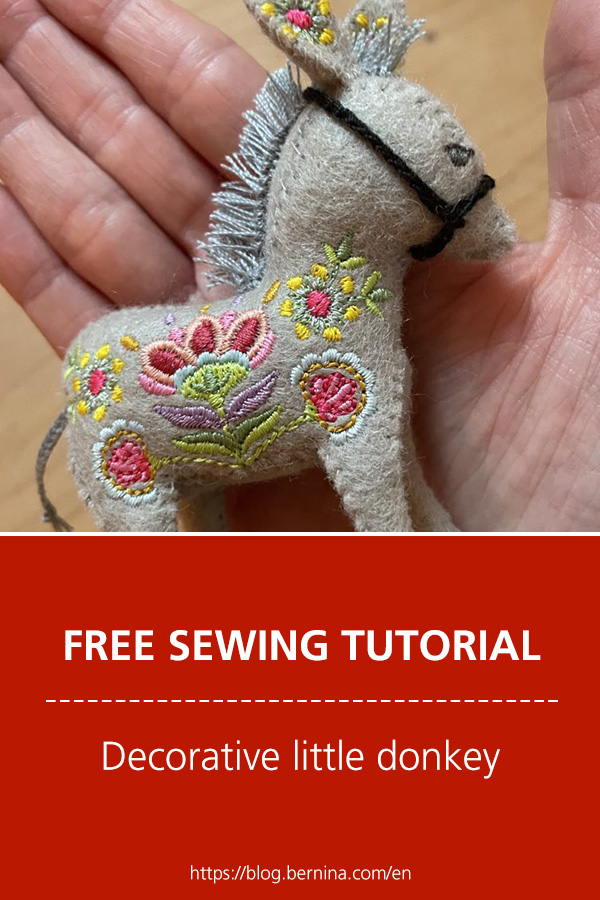
 BERNINA Corporate Blog -
BERNINA Corporate Blog -



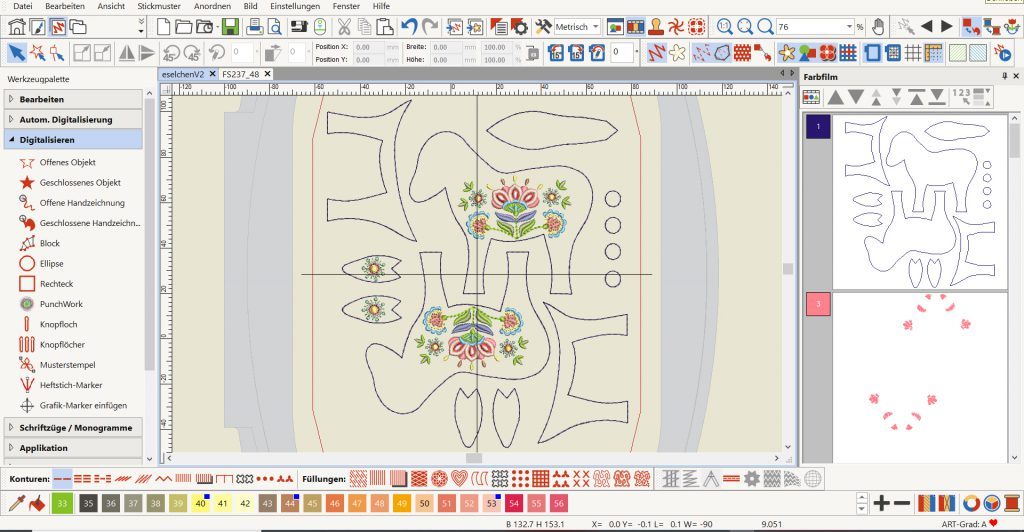








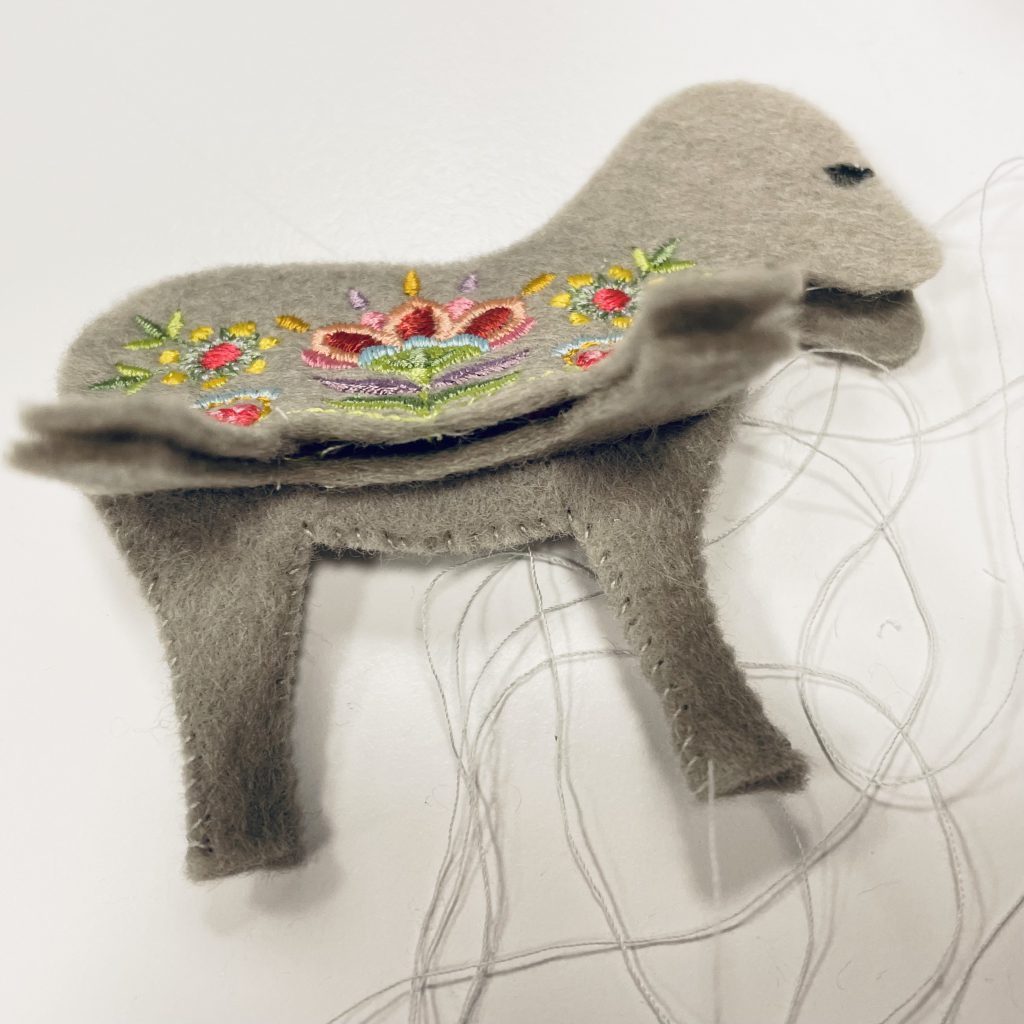












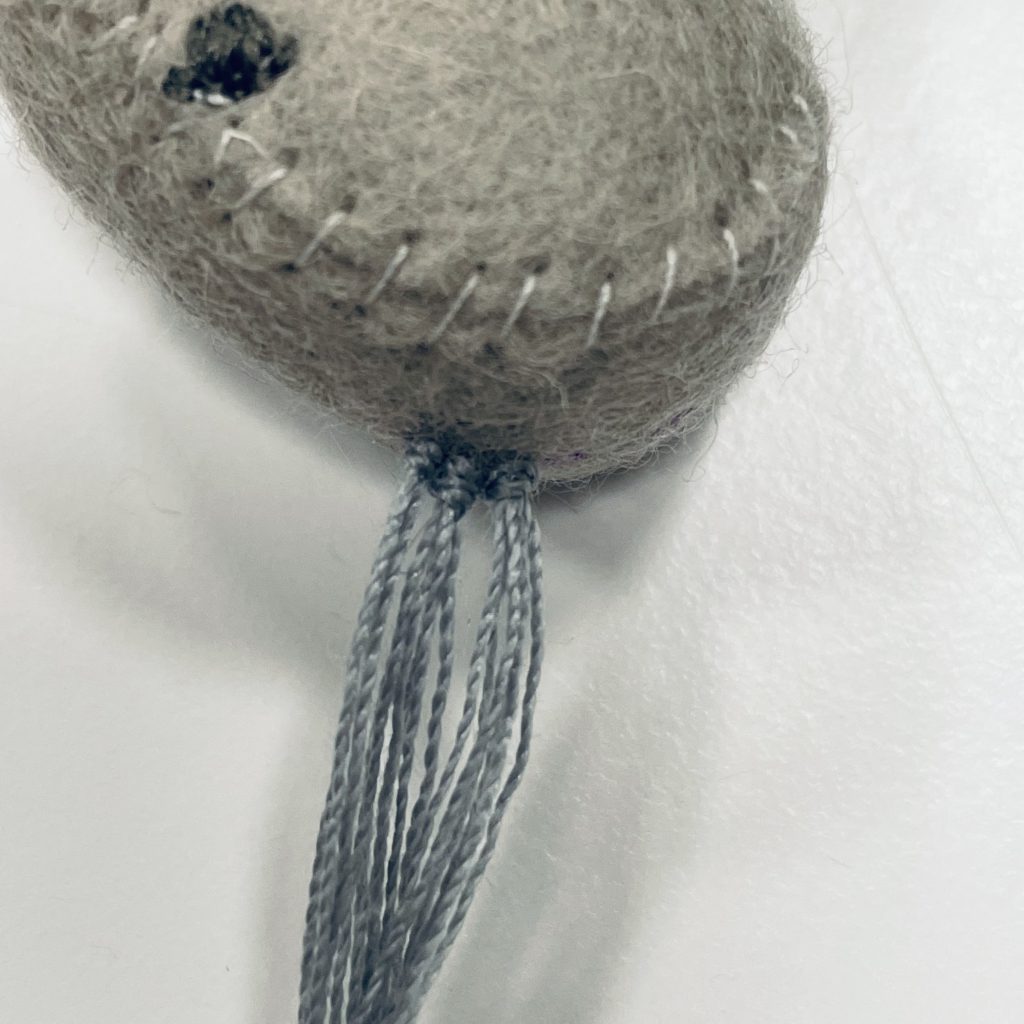





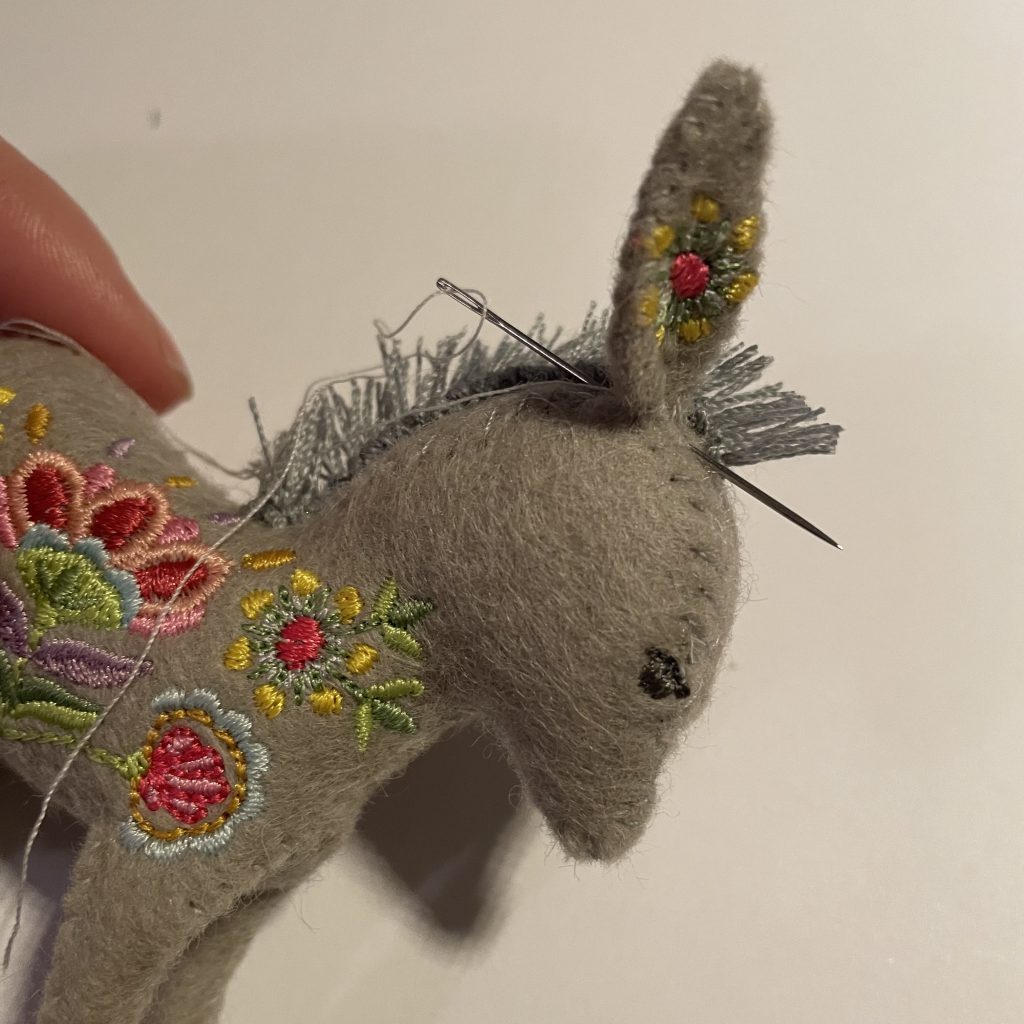


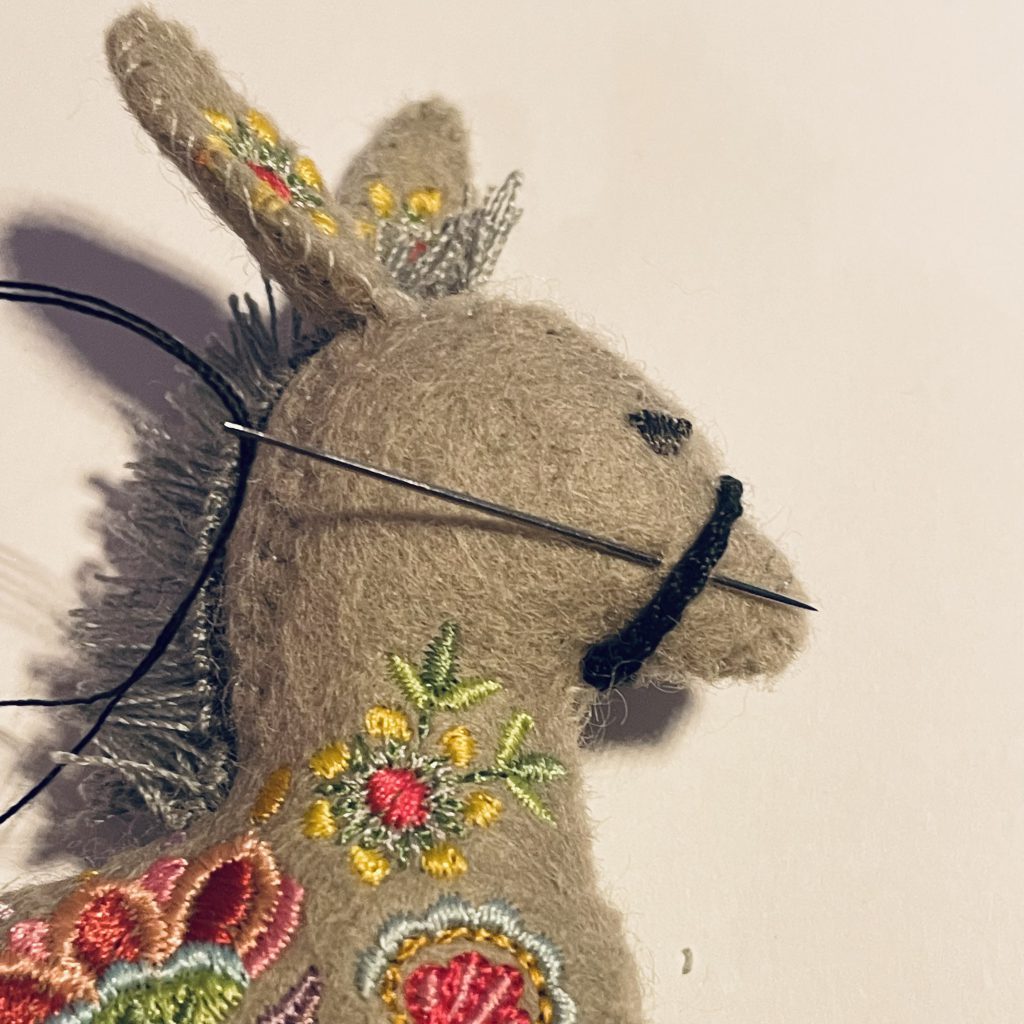
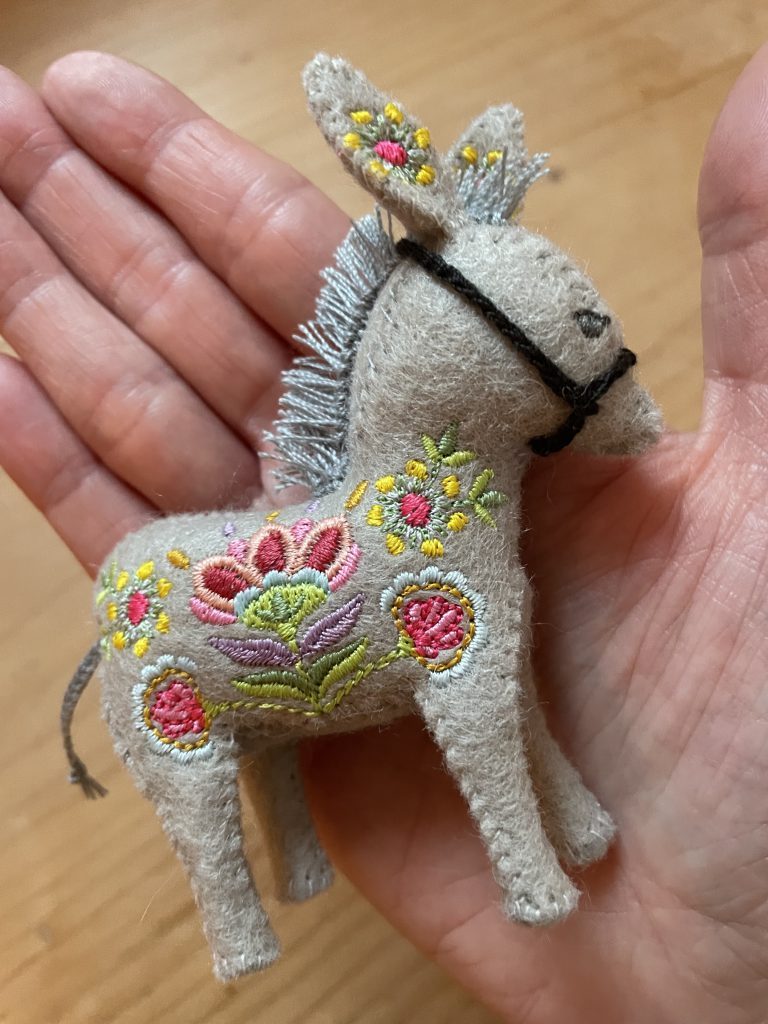




Your donkey is absolutely adorable! Thank you for your work.